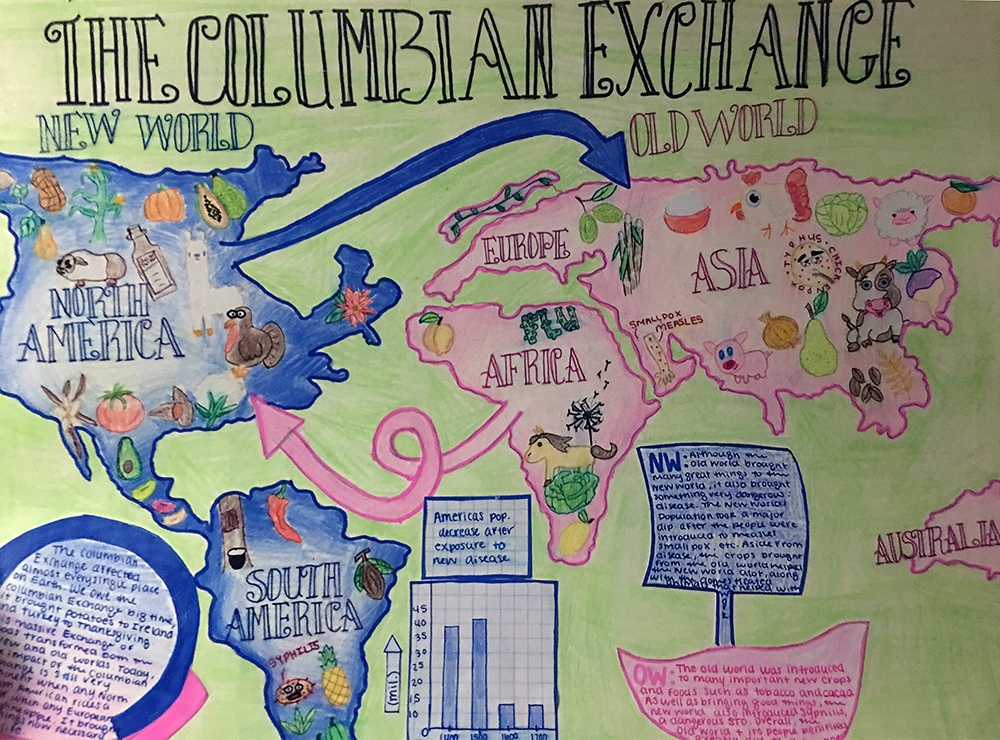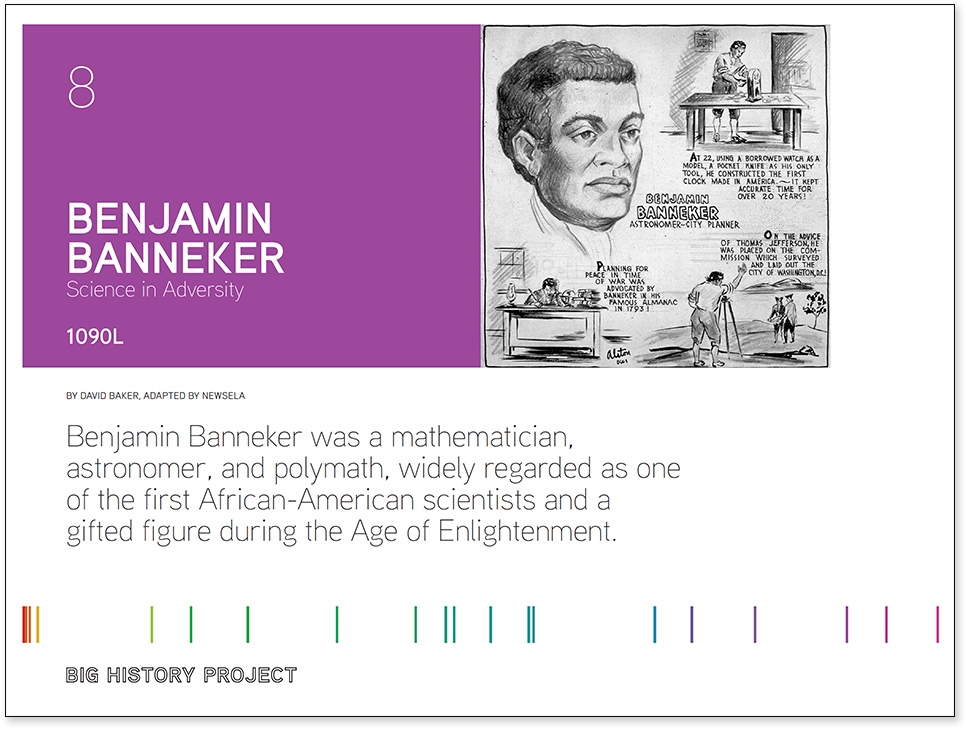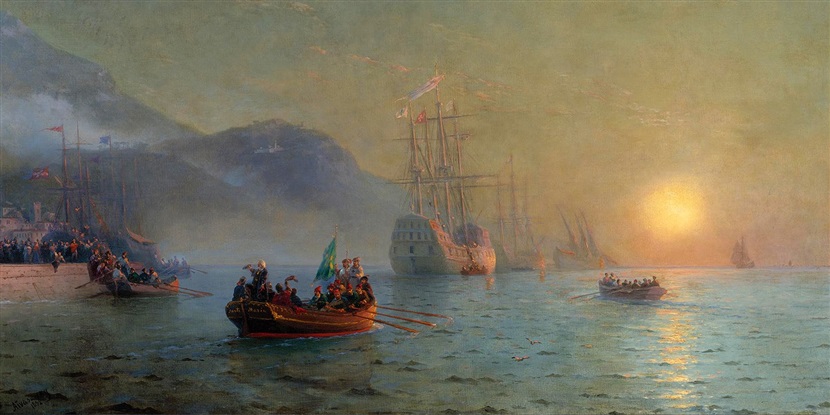By Bridgette Byrd O’Connor
The Columbian Exchange was a monumental turning point in our history, so it’s no surprise that it’s likely a topic that appears somewhere in your course plan, whether you teach world or American history and whether you start your year in 1200 or in the Neolithic. Either way, we’ve got you covered!
We pulled together some of our favorite resources on the Columbian Exchange in one convenient location. Check out these lesson plans, which focus on how new routes of exchange and the interconnection of previously isolated communities changed the world forever. Each lesson is estimated to take one to three 50-minute class periods and includes lesson objectives, descriptions, notes for teachers, openers, articles, videos, activities, closers, and formative assessments. We also created a short new video that we think will be a great way to kick off a lesson on the Columbian Exchange and get your students thinking about why this topic matters. Use this and the OER Project content pieces we’ve curated to support an existing lesson, or use the three-day lesson plan to explore the global consequences of this momentous event.
Finally, to support your teaching of this important topic, we’re dusting off one of our favorite blog posts. While it focuses on resources in Big History Project, you’ll find great teaching tips here, regardless of which course you teach!
Interconnection doesn’t exactly sound like an enthralling or kid-engaging topic (at least not from their perspective), but this happens to be one of my favorite units. It’s also the one my students are thoroughly confused by at first because there’s no threshold; however, by the end of the unit, they’re all trying to make the case for why interconnection should be a threshold.
This is also the unit that most of your students will remember from previous social studies classes, in particular the content covering the Columbian Exchange. Now, that can be both a good and bad thing, depending on your students. Some may tune out for a bit while others will be like many of mine and say, “Oh! I remember this and remember when Ms. so-and-so did this crazy thing in class to explain this topic.” However, I’ve also had cases where Ms. so-and-so taught them something so different than the norm that you end up having to reteach to prevent them from going through life with a slightly messed up version of the historical events. Luckily, there are a number of assets that will help those students who remember learning about the Columbian Exchange to dig deeper. And those students who have no memory of learning this, will be able to start from the beginning.
One of the best parts about this unit is that every asset helps students build evidence to answer the driving question: What are the positive and negative impacts of interconnection? In fact, I would encourage your students to make a list or a simple t-chart with “positive” and “negative” at the top. Then, they could add the effects of interconnection at the end of every asset or lesson. This will help them more fully answer the unit’s second DQ Notebook activity by using evidence from the course materials.
In Lesson 8.0, students try to figure out why empires expanded and what positive and negative outcomes might have resulted from this expansion. They’re also introduced to the Modern Revolution—a topic that will take center stage in the unit that follows. But the classroom favorite for this lesson has to be the World Zone Game. Modeled on games such as Civilization, this one may seem like a challenge to pull off but with careful planning (and reading of instructions), it’s definitely a winner, especially in terms of allowing students to see the positive and negative impacts that began to occur once the world zones connected.
Finally, for this lesson, the David Christian article “The Four World Zones” helps students see how regional interactions changed to global interconnections.
 The Four World Zones, by BHP, CC BY-NC 4.0.
The Four World Zones, by BHP, CC BY-NC 4.0.
Lesson 8.1 is packed with interesting content that engages students on the topic of exploration and how these early efforts paved the way for the Columbian Exchange. A favorite opening of mine is the World Travelers activity. I organize my class into groups of two to three students and have them read the passages from Marco Polo’s travels to figure out what he’s describing. Some groups come up with answers quickly and others become frustrated that they can’t figure it out, but it’s a great way to introduce students to primary sources without overwhelming them. And who doesn’t want to solve a mystery and figure out what this weird unicorn-like animal might be!
The Age of Adventure article collection in Lesson 8.1 introduces students to world travelers they may have never encountered previously, especially since Columbus is the explorer from this period usually taught in American schools. Both the positive and negative impacts of interconnection can be found in the Issues of Colonization Mini Project, which allows students to dive into some pretty surprising impacts of interconnection and colonialism and make modern connections to this era of history.
The next lesson has students do a deep dive into territory that many will be familiar with—the Columbian Exchange and the resulting transatlantic slave trade. These assets are particularly good at presenting both the positive and negative impacts of interconnection. In my opinion, the best activity in this lesson is the Columbian Exchange Infographic, which allows students to put their learning into a visual format where they can see those connections and realize that certain foods they eat every day have some interesting origins.
 Sample of Columbian Exchange Infographic student work. Photo courtesy of Bridgette Byrd O’Connor.
Sample of Columbian Exchange Infographic student work. Photo courtesy of Bridgette Byrd O’Connor.
Lesson 8.3 provides some interesting assets on the history of money and the development of a regional network that later became a global one by tracing the history of the Silk Road routes. A fascinating addition to telling the history of these routes is the article “Lost on the Silk Road,” which is really a modern travel account about how difficult and dangerous it was for these early traders who participated in this regional network. I also like to use an outside resource here to show how these routes are still in use today and how China has transformed and modernized them, but students should also think about the cost of continuing to use fossil fuels to transport goods across the world. Finally, the article on Benjamin Banneker, a lesser-known historical figure to most students, provides a human element to both the positive and negative impacts of interconnection by presenting how early globalization impacted people on an individual scale.
 Benjamin Banneker, Science in Adversity, by BHP, CC BY-NC 4.0.
Benjamin Banneker, Science in Adversity, by BHP, CC BY-NC 4.0.
About the author: Bridgette Byrd O’Connor holds a DPhil in history from the University of Oxford and taught Big History, world history, and AP US government and politics for 10 years at the high-school level. In addition, she has been a freelance writer and editor for the Big History Project and the Crash Course World History and US History curricula. She’s currently a content manager for OER Project.
Header image: Christopher Columbus sailing from Palos, 1892. Private Collection. Artist : Aivazovsky, Ivan Konstantinovich (1817-1900). ©Fine Art Images/Heritage Images/Getty Images.
 For full access to all OER Project resources AND our amazing teacher community,
For full access to all OER Project resources AND our amazing teacher community, 
